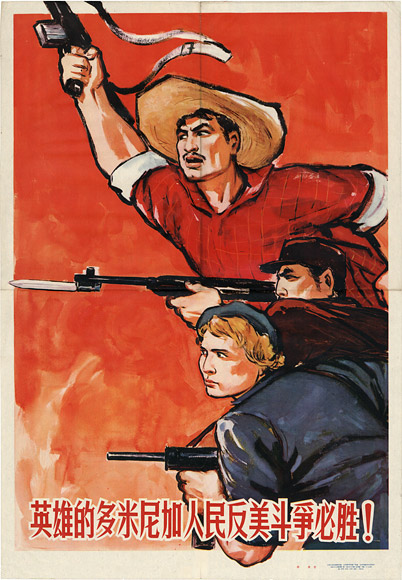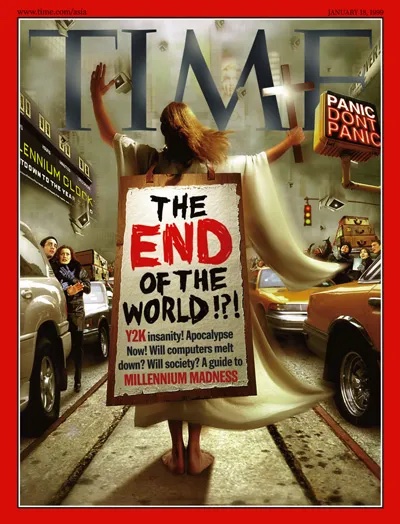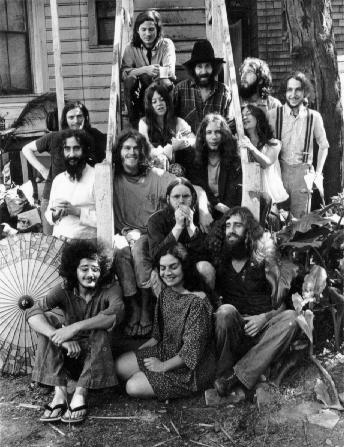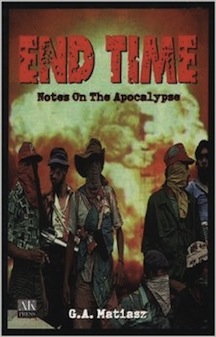 Ho, Ho, Ho Chi Minh! The NLF is gonna win!
Ho, Ho, Ho Chi Minh! The NLF is gonna win!
The chant rang out from certain quarters of the Anti-Vietnam War Movement during marches and rallies. It was voiced by anti-imperialist components of the movement, a minority element comparable to the pacifist portion that believed in nonviolence and called themselves “the Peace Movement.” Most of the rest of us were neither anti-imperialists nor pacifists, and while some of us considered ourselves revolutionaries few of us were sycophantic cheerleaders for Third World national liberation movements.
Last column I discussed how the GI organization Vietnam Veterans Against the War was a stellar example of revolutionary defeatism during the Long 60s. The concept of revolutionary defeatism arose with the first World War, the near global conflict between the Allied and Central European powers and their colonial empires. European Social Democratic Parties—all avowedly Marxist and internationalist, some like the Social Democratic Party of Germany extremely popular, and none in power prior to 1914—split when the war began. The majority of these parties went pro-war, and defended their respective countries involvement in the war effort. Hence the term revolutionary defensism and the epithet social patriotism.
 The social democratic minority—Luxemburg, Lenin, Liebknecht, Kautsky, Jaurès, et al—called themselves genuine internationalists, defended radical class struggle, and espoused revolutionary defeatism. The ruling classes of nations at war send their working classes to fight and die in battle against each other, so workers can never win when fighting capitalist wars. Workers need to turn these nationalistic conflicts into civil war and then international proletarian revolution to overthrow their national bourgeoisies. The imperialist ruling classes are the only true enemy and workers of the world need to turn their guns against them.
The social democratic minority—Luxemburg, Lenin, Liebknecht, Kautsky, Jaurès, et al—called themselves genuine internationalists, defended radical class struggle, and espoused revolutionary defeatism. The ruling classes of nations at war send their working classes to fight and die in battle against each other, so workers can never win when fighting capitalist wars. Workers need to turn these nationalistic conflicts into civil war and then international proletarian revolution to overthrow their national bourgeoisies. The imperialist ruling classes are the only true enemy and workers of the world need to turn their guns against them.
The VVAW attempted to do just that and caused the near collapse of the US Military in the process. But there are limitations to considering the GI revolt during the Vietnam War as unalloyed revolutionary defeatism. First, the concept had its ascendency during and soon after the first World War which experienced dozens of troop mutinies and a half dozen mostly-failed social revolutions. Revolutionary defeatism was a real option, as was the potential for international socialist revolution. In the Long 60s however, and despite our wishful thinking that revolution was imminent in America, the VVAW and the larger 60s social movements didn’t have any real opportunity for overthrowing the US government or Western imperialism.
Second, while the VVAW arguably practiced a form of revolutionary defeatism, the Vietnamese side of the war was not practicing revolutionary defeatism but rather revolutionary defensism. Right off, I’ll get blowback contending that the Vietnamese fight was not revolutionary defensism but a genuine “socialist struggle for national liberation.” To understand why the distinction is not so clear-cut, start with the preamble of Marxism’s retreat into nationalism.
 When Social Democracy split into a “social patriotic” majority and a newly-minted Communist minority, the latter’s internationalism was short-lived. After the Russian Revolution, Lenin and the Bolsheviks were keen advocates of anti-imperialism and self-determination for all peoples, demanding freedom from colonial oppression for the Third World. Marxist-Leninists insisted they stood for international socialism, yet they also insisted that national liberation movements were not about chauvinism but about revolutionary democracy. Stalin took power in 1924 and declared his doctrine of “socialism in one country.” Mao then insisted that “Chinese Communists must therefore combine patriotism with internationalism.” These are the cornerstones of Third World national liberation struggles, including the Vietnamese one.
When Social Democracy split into a “social patriotic” majority and a newly-minted Communist minority, the latter’s internationalism was short-lived. After the Russian Revolution, Lenin and the Bolsheviks were keen advocates of anti-imperialism and self-determination for all peoples, demanding freedom from colonial oppression for the Third World. Marxist-Leninists insisted they stood for international socialism, yet they also insisted that national liberation movements were not about chauvinism but about revolutionary democracy. Stalin took power in 1924 and declared his doctrine of “socialism in one country.” Mao then insisted that “Chinese Communists must therefore combine patriotism with internationalism.” These are the cornerstones of Third World national liberation struggles, including the Vietnamese one.
Imperialism and colonialism were also defining characteristics of Third World national liberation struggles, starting with the small elite of the colonized class that emerged during the colonial period known as the national bourgeoisie. This Third World national bourgeoisie was Western educated and organized with the consent of and by the imperial interests of the colonial powers. (Regarding Vietnam, Hồ Chí Minh traveled extensively throughout the West, gaining his political education and commitment to socialism while living in France. Võ Nguyên Giáp studied at the French Indochinese University at Hanoi.) The native bourgeoisie in the Third World possessed limited capital and so cooperated in the exploitation of their nations with their colonial overlords. Their commitment to nationalism was an article of blind faith, and their national liberation struggles were an uncritical replica of European modernity, born of the successful bourgeois revolutions starting in the 15th and 16th centuries.
 Their commitment to socialism was frequently born of Leninist vanguard party politics and Stalinist “socialism in one country” ideology. This national bourgeoisie, once in power, administered imperialism, decolonization, capital accumulation and the restoration of ruling class power. The national bourgeoisie claimed to be revolutionary and benefit “the people,” but in fact they underdeveloped certain sectors of their national economy while developing the whole economy to assist imperialist exploitation, and thus made the people dependent on global capitalism through hegemonic practices like national debt. (Vietnamese sweatshops mercilessly exploited native/child labor and indebted the country to the World Bank as Vietnam ostensibly became a mixed “socialist-oriented market economy.”) Ultimately, this native bourgeoisie prevented their people from achieving their full potential and maximizing their wealth by separating the working classes from direct ownership and control of the means of production, specifically the land. This is classic substitutionism; of the vanguard party substituting in power for the working classes, and of the central committee or the chairman substituting for the vanguard party. This national bourgeoisie was relentless against workers and people holding resources coveted by that bourgeoisie, insisting once in power that they were presiding over the end of colonialism, the birth of socialism, and the achievement of true national liberation. Rather than helping the people and the workers however, they only helped themselves and often the imperialists of a global capitalism.
Their commitment to socialism was frequently born of Leninist vanguard party politics and Stalinist “socialism in one country” ideology. This national bourgeoisie, once in power, administered imperialism, decolonization, capital accumulation and the restoration of ruling class power. The national bourgeoisie claimed to be revolutionary and benefit “the people,” but in fact they underdeveloped certain sectors of their national economy while developing the whole economy to assist imperialist exploitation, and thus made the people dependent on global capitalism through hegemonic practices like national debt. (Vietnamese sweatshops mercilessly exploited native/child labor and indebted the country to the World Bank as Vietnam ostensibly became a mixed “socialist-oriented market economy.”) Ultimately, this native bourgeoisie prevented their people from achieving their full potential and maximizing their wealth by separating the working classes from direct ownership and control of the means of production, specifically the land. This is classic substitutionism; of the vanguard party substituting in power for the working classes, and of the central committee or the chairman substituting for the vanguard party. This national bourgeoisie was relentless against workers and people holding resources coveted by that bourgeoisie, insisting once in power that they were presiding over the end of colonialism, the birth of socialism, and the achievement of true national liberation. Rather than helping the people and the workers however, they only helped themselves and often the imperialists of a global capitalism.
National liberation struggles in the Third World attempted to mimic Europe in virtually every way, and not just its sometimes virulent nationalism. The contradictions between the French Revolution’s “Rights of Man” with its supposed humanism, freedom and autonomy and the increased exploitation, slavery and even mass murder of European history are paralleled in the Third World as it decolonized. (Vietnamese “re-education camps,” forced labor and economic relocations, brutal treatment of national minorities like the Hmong, Montagnards and Khmer Krom, expulsion of boat people, atrocities and massacres committed during Vietnam’s invasion and occupation of Cambodia, all while professing the ideals of “international socialism.”) Third World national liberation struggles attempted to “overcome” racism by instigating their own, often more relentless racism within the racist framework inherited from Europe. Much as European racism was initiated and fueled by Spanish, Portuguese, English and other colonialist powers through “primitive accumulation” against native peoples in the Americas and the rest of the world, Third World national liberation recapitulated both Europe’s “primitive accumulation” and racism. The national/racial/ethnic identities constructed by these struggles were in turn joined to the alienation, fragmentation, and consumerism fostered first by monopoly capitalism and then late-stage capitalism.
 Third World national liberation movements, once in power, had numerous other problems beginning with failing to stem the flow of capital out of their country despite efforts at decolonization and anti-imperialism after political liberation. This is partly due to false decolonization and anti-imperialism. According to Franz Fanon, “if the native bourgeoisie takes over power, the new state, in spite of its formal sovereignty, remains in the hands of the imperialists.” But it’s also due to rampant corruption, and not just state capture where private interests significantly influence a state’s decision-making processes to their own advantage. Widespread systemic political corruption, the corruption of politicians, bureaucrats and civil servants as well as the commodification of everything, including the integrity and conscience of the leadership, accounted for the flight of capital. (Vietnam’s rates of political/party corruption, bribery, etc stand second only to India, with foreign direct investment lagging at barely $28.5 billion, far below its ASEAN neighbors, due to mistrust.)
Third World national liberation movements, once in power, had numerous other problems beginning with failing to stem the flow of capital out of their country despite efforts at decolonization and anti-imperialism after political liberation. This is partly due to false decolonization and anti-imperialism. According to Franz Fanon, “if the native bourgeoisie takes over power, the new state, in spite of its formal sovereignty, remains in the hands of the imperialists.” But it’s also due to rampant corruption, and not just state capture where private interests significantly influence a state’s decision-making processes to their own advantage. Widespread systemic political corruption, the corruption of politicians, bureaucrats and civil servants as well as the commodification of everything, including the integrity and conscience of the leadership, accounted for the flight of capital. (Vietnam’s rates of political/party corruption, bribery, etc stand second only to India, with foreign direct investment lagging at barely $28.5 billion, far below its ASEAN neighbors, due to mistrust.)
Third World national liberation struggles had hazy definitions of “democracy” that separated political from economic democracy, adulterated participatory democracy with Leninist faux democratic centralism, and postured that one-party dictatorships were actually European-style social democracies. Similarly, imprecise applications of “socialism” and “Marxism” were often insufficient, usually cultural formations disguised as economic, and denying the importance of economic democracy, workers’ self-management and community control against state ownership and bureaucratic control. The national bourgeoisie pretended to usher in democracy and socialism while actually incorporating itself within and entrenching the global capitalist system of imperialism. Thus national liberation movements seamlessly coalesced with new, anti-colonial forms of imperialism. Third World national liberation struggles, their politics and manifestations, became reified. György Lukács in History and Class Consciousness called reification “the structural process whereby the commodity form permeates life in capitalist society.” Since all is capitalism these days—from the inner workings of individual consciousness to external corporatist economic structures, from “socialist” China and Vietnam to Campist so-called anti-imperialist regimes—we live in a totally reified world. The distinction between revolutionary defeatism versus revolutionary defensism I initially expressed by comparing the Vietnam Veterans Against the War to Vietnam’s national liberation struggle remains. Sanctifying national liberation is fraught at best, lethal at worst.
– – – – –
 Half of this column was stolen from Idylls, Imitation, Ideology and Imperialism: A Fanonian Critique of National Liberation by Seshadari Jesse Moodley, Picasso said mediocre artists borrow, great artists steal. I’m not a great writer, but I do know when someone is. This University of Cape Town MA thesis is brilliant. (Download at https://open.uct.ac.za/handle/11427/33870)
Half of this column was stolen from Idylls, Imitation, Ideology and Imperialism: A Fanonian Critique of National Liberation by Seshadari Jesse Moodley, Picasso said mediocre artists borrow, great artists steal. I’m not a great writer, but I do know when someone is. This University of Cape Town MA thesis is brilliant. (Download at https://open.uct.ac.za/handle/11427/33870)





























































